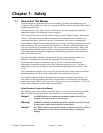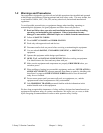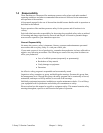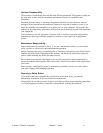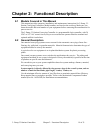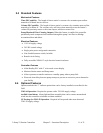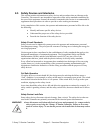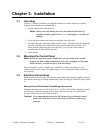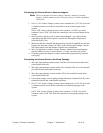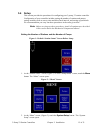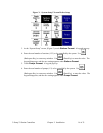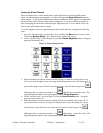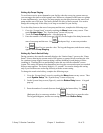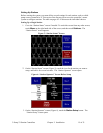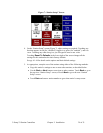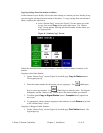3–Pump 33-Station Controllers Chapter 3: Installation 14 of 51
Connecting the Control Panel to Vacuum Hoppers
Note: Wire size depends on control voltage, distance, number of vacuum
hoppers, and the number of wires in each raceway. Consult a qualified
electrician.
1. On 115 VAC control voltage systems, run a common hot (115 VAC) wire and
a common neutral wire from the controller to each vacuum hopper in the
system.
On 24 VDC control voltage systems, run a common +24 VDC wire and a
common 0 (zero) VDC wire from the controller to each vacuum hopper in the
system.
2. On all systems, run two wires to each vacuum hopper: one each from the
controller to the Bin-Full switch (LS) and to the Atmospheric/Sequence-T
solenoid (SOL) valve.
3. Make sure that the solenoid and the proximity switch (if supplied) on vacuum
hoppers are the same voltage (24 VDC) as the control panel voltage. Consult
the control panel serial tag and the solenoid valve nameplates.
4. Wire size depends on control voltage, distance, number of vacuum hoppers,
and the number of wires in each raceway. Consult a qualified electrician.
5. Properly ground each hopper to reduce static build up generated by material
conveying.
Connecting the Control Panel to the Pump Package
1. Wire the pump package motor starter coil (M) to the terminal provided in the
control panel enclosure.
2. Wire the pump package vacuum relief valve solenoid (SOL A) to the terminal
provided in the control panel enclosure.
3. Wire the pump package vacuum switch (VS) to the terminal located in the
control panel enclosure.
4. On vacuum pumps, wire the pump package blowback solenoid (SOL B) to the
terminal located in the control panel enclosure.
5. On 115 VAC control voltage systems, run a common hot (115 VAC) wire and
a common neutral wire from the controller to each pump package in the
system.
On 24 VDC control voltage systems, run a common +24 VDC wire and a
common 0 (zero) VDC wire from the controller to each pump package in the
system.



